Farming
Red clover innovation for Wales
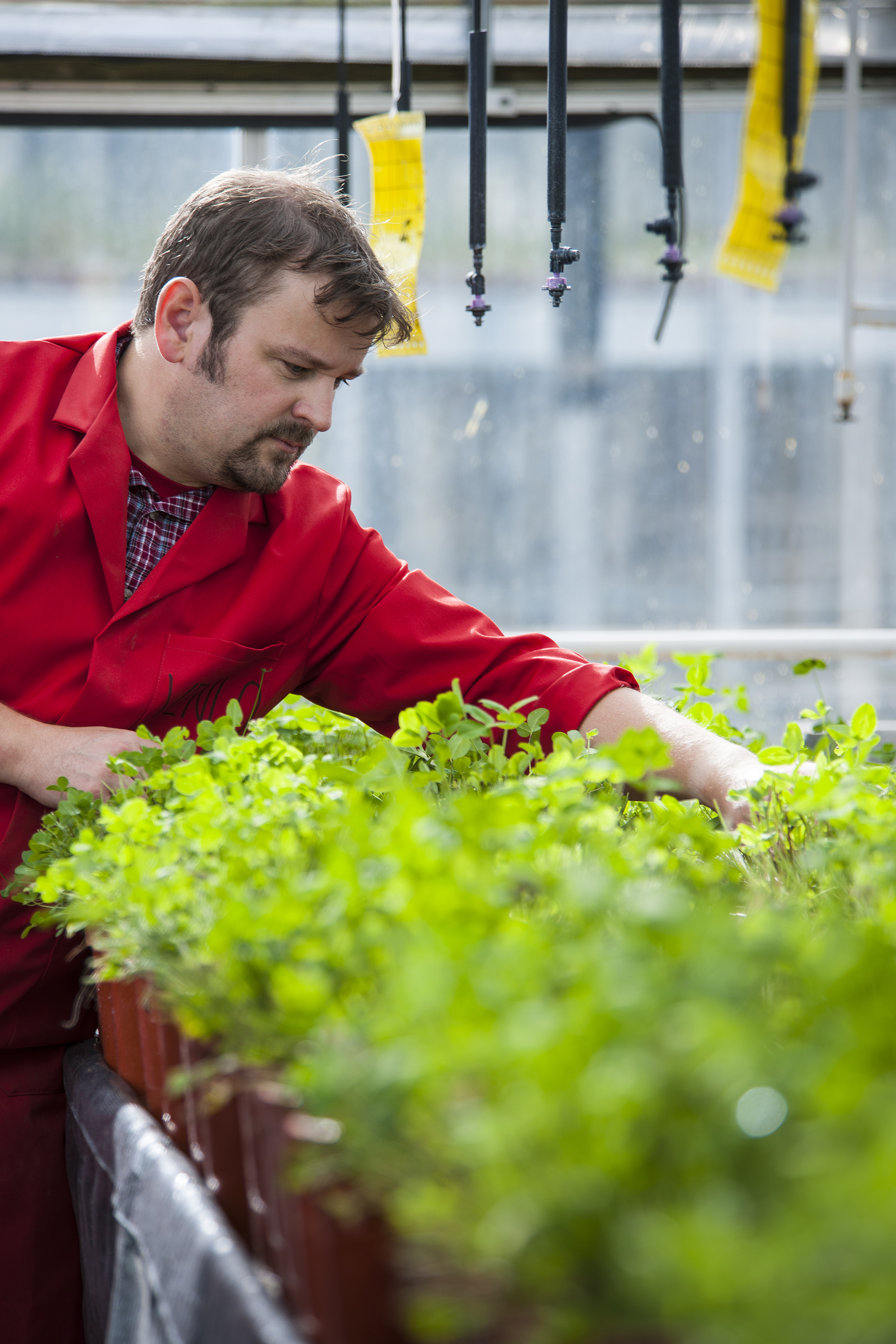
NEW research to ensure more Welsh livestock farmers could benefit from longer lasting, disease resistant red clovers is being undertaken at Aberystwyth University’s Institute of Biological, Environmental and Rural Sciences (IBERS).
The three-year Welsh Government (WG) and European Regional Development Fund (ERDF)-funded project is looking at ways to improve protein production and utilisation on farms in Wales through improved forage crops.
Professor Leif Skot, head of forage plant breeding at IBERS, is leading the project, whose partners are WG, ERDF, Germinal Holdings, HCC and Farming Connect.
As part of the project, Professor Skot and his team are looking at how red clover production and persistence can be improved, helping farmers to improve their silage crop value. In turn, this could go some way in helping farmers reduce the need to buy-in as many expensive concentrates.
Historically, some producers have been drawn away from red clover due to a tendency for yields to drop off after a couple of years. To solve that problem, scientists developed varieties which focused on improved yields and better persistence so they yield well into their fourth and fifth harvest.
However, prolonging the productive life of the plant increases the risk of another problem red clover faces, which is where this new project is currently focused.
Professor Skot explains: “One of the biggest issues is that red clover is susceptible to trampling, and if the plants get damaged then they are susceptible to disease. White clover is stoloniferous, which means it grows by stolons [small roots] which spread across the soil surface and allows the plant to fill in any gaps in the sward. Red clover plants, on the other hand, grow from a single growing point, the crown. That means that once the crown is damaged and the plant succumbs to disease, the remaining plants aren’t able to compensate and fill in the gaps, leading to a loss in yields.”
In a bid to counter this, Professor Skot and his team are developing resistance to the two major diseases responsible for red clover loss: Stem Nematode and Crown Rot (Sclerotinia).
They hope that by developing disease-resistant plants, they can create a more robust, productive plant.
“Stem Nematode and Sclerotinia are soil-borne pathogens for which we have no recognised chemical control. The current solution is to take a long gap in the rotation to minimise the potential risk of the problem,” adds Paul Billings of Germinal. “This research project is looking at whether we can select material which is more resistant to each of these diseases, and then combine them to create varieties resistant to both pathogens.”
Professor Skot says he and his team have carried out several generations of selection for Stem Nematode and Sclerotinia. They are now at the stage where they will combine the resistance to one population so it can be tested in the field.
While it is high-yielding and produces high-quality forage from the first year, red clover does need to be managed in a way which will improve its resistance, Professor Skot adds.
“The crown of the plant is susceptible to damage, so we are looking at improving its structure.. Our research shows that if they have compact crowns then they are more resilient to damage from machinery and compaction from animals or grazing. The major management technique is not cutting below 5cm and not overgrazing so that the crown isn’t damaged.”
With the correct management, red clover can yield between 22 and 25 tonnes of dry matter per hectare per annum when sown with grass, with clover content able to reach as high as 20 tonnes of dry matter in the first year.
“It’s high-yielding and high-quality from the first year, which is one of the great things about the crop. By minimising the problem areas, we can hopefully give Welsh farmers a way to produce more of their own protein on-farm,” he says.
This project aims to help deliver on the Welsh Government’s Well-being of Future Generations Act, one objective of which is to drive sustainable growth. It also contributes to its Economic Action Plan which encourages greater R&D and innovation.
RED CLOVER CASE STUDY
The Cowcher family from Penrhiw, Ceredigion, a Farming Connect Focus site, has seen the advantages of growing red clover on their farm for over a decade, but the introduction of long-lasting varieties would boost the benefits of the crop even further.
“We’ve been using red clover for more than ten years since we converted to organic production,” says Phil Cowcher, who farms beef and sheep with his parents across 500 acres (202ha) of part-owned, part-rented and part share-farmed organic farmland.
“It gives us high yields of good-quality forage, which can be difficult in organic systems, and it suppresses weeds because it’s very vigorous – if we get creeping thistles it smothers and gets rid of them,” he says. “Red clover is also important for fixing nitrogen. Cereals following red clover systems seem to yield very well, and it has deep tap roots so it breaks up the compaction.”
Phil believes planting with a cereal reduces competition from weeds during establishment, as the cereal acts as a nurse crop.
The 45 acres (18ha) of red clover is used by both the farm’s beef and sheep enterprises. The calves – produced by the 60-head, mainly Stabiliser suckler herd – tend to be fed the second and third cuts, as part of the growing and finishing rations.
The first cut, which usually has a higher grass content and metabolisable energy, is usually fed to pregnant ewes late in their pregnancy. Towards the end of the growing season, the red clover leys are rotationally grazed by lambs.
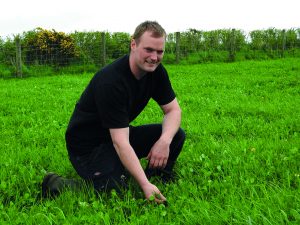
In clover: Phil Cowcher at Penrhiw
Phil adds: “For the calves, I like to feed two-thirds red clover with a third barley and peas for fibre. If it’s alone then it’s a bit rich, but by combining it with barley and peas it seems to complement the clover well.
“We make sure lambs are introduced gradually to the red clover when they first graze it. Once they’ve adjusted to the diet, growth rates are good and they usually finish well – we start selling in June at around 19kg and the last ones go by October.”
Phil believes management is fairly simple but stresses the importance of sowing in a fine seedbed when soils are over 10℃. If there’s a cold spring then cereals are planted first and the red clover ley is sown on top with a grass harrow/air seeder, into the growing crop, once soil temperature is high enough.
“When we cut it we have to make sure we don’t cut it too low, and we have to be careful not to overgraze it and damage the crown too. But for us, red clover’s a high-quality, high yielding crop and we’ll definitely carrying on growing it,” Phil concludes
Farming
Basic Payment Scheme 2025 balance paid to 95% of Welsh farmers
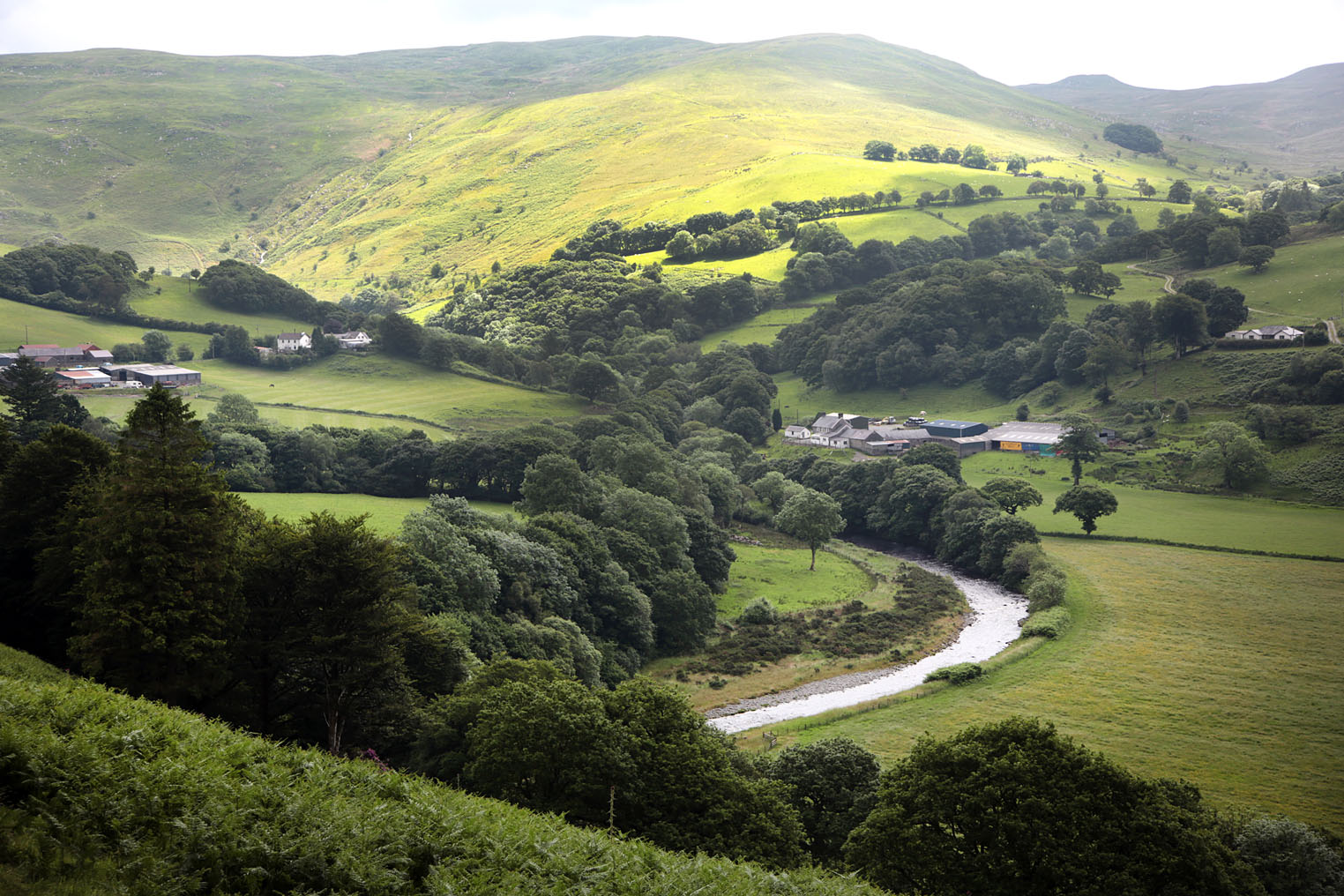
Final year of BPS as transition to Sustainable Farming Scheme begins
The WELSH Government says more than ninety-five per cent of farm businesses have now received their full or balance payment under the final year of the Basic Payment Scheme (BPS), ahead of the introduction of the new Sustainable Farming Scheme (SFS) in 2026.
Announcing the update on Friday (Dec 12), Deputy First Minister and Cabinet Secretary for Climate Change and Rural Affairs, Huw Irranca-Davies, confirmed that over 15,400 Welsh farm businesses have been paid £68.7m. This comes on top of the £160m issued in BPS advance payments since 14 October.
Final round of BPS payments
The Basic Payment Scheme, which has been the backbone of farm support in Wales for a decade, provides direct income support to help farmers plan and manage their businesses. BPS 2025 marks the last year in which full BPS payments will be made before the scheme begins to be phased out.
The Cabinet Secretary said officials would “continue to process the outstanding BPS 2025 claims as soon as possible,” adding that all but the most complex cases should be completed by 30 June 2026.
Payments issued today represent the main balance due to farmers following earlier advances, giving many businesses the cash flow they need during the quieter winter period—traditionally a challenging time in the agricultural calendar.
Shift to Sustainable Farming Scheme in 2026
From 1 January 2026, the Welsh Government will begin rolling out the Sustainable Farming Scheme, a major reform to how agricultural support is delivered. The SFS will reward farmers for environmental outcomes such as habitat management, carbon reduction and biodiversity improvements, alongside continued food production.
The government has argued that the new scheme is essential to meeting Wales’ climate and nature targets while ensuring long-term resilience in the sector. However, the transition has been closely watched by farming unions, who have raised concerns about the administrative burden, income stability, and the speed at which BPS is being phased out.
Mr Irranca-Davies reaffirmed the government’s stance, saying: “This government is steadfastly committed to supporting Welsh farmers to sustainably produce quality food. This is demonstrated today in our payment of the BPS 2025 balance payments and will continue throughout the transition period.”
Sector reaction
Farming unions are expected to scrutinise the detail of today’s announcement, particularly around remaining unpaid cases. Last year, late payments led to frustration in parts of the sector, with unions calling for greater certainty as the industry faces rising input costs, supply chain pressures and continued market volatility.
The move to the SFS remains one of the most significant agricultural policy changes in Wales since devolution. Ministers insist the shift is designed to support both food production and environmental stewardship, while critics warn the transition must not undermine farm viability—especially for family-run livestock farms that dominate rural areas such as Pembrokeshire, Ceredigion and Carmarthenshire.
What happens next
Farmers still awaiting their BPS 2025 balance will continue to be processed “as soon as possible”, the Welsh Government said. Officials will also publish updated guidance on the Sustainable Farming Scheme ahead of its launch.
The coming year will therefore become a pivotal moment for Welsh agriculture, as the long-standing BPS framework—which provided over £200m annually to Welsh farmers—makes way for a new results-based model that will shape the industry for decades to come.
Community
Wolfscastle farm’s new shed sparked ‘noise nuisance’ claims
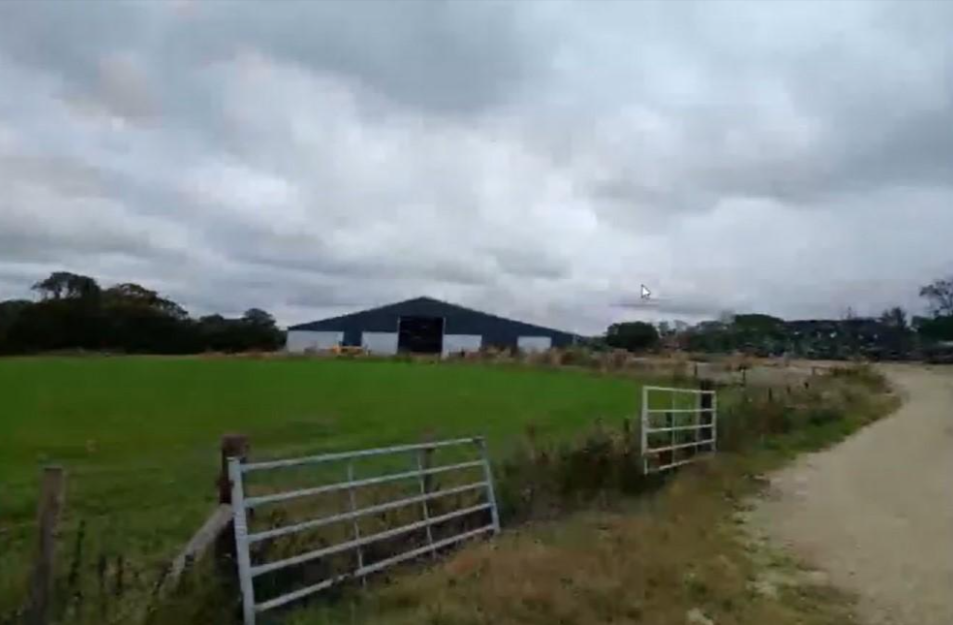
A PEMBROKESHIRE farmer “jumped the gun” in his enthusiasm to build a new cattle shed which includes ‘robot slurry scrapers’ that have been causing a noise nuisance for neighbours, county planners heard.
In a retrospective application recommended for approval at the December meeting of Pembrokeshire County Council’s planning committee, Aled Jenkins sought permission for a replacement cattle housing and silage clamp at Upper Ty Rhos, Wolfscastle.
An officer report said Upper Ty Rhos consists of a herd of 630 youngstock beef cattle, the applicant seeking permission for the replacement 100-metre-long cattle housing building.
It said the building benefits from a robotic scraping system to internally clean it to improve animal welfare and efficiency.
However, the slurry scraper system in operation has been found to constitute a statutory noise nuisance.
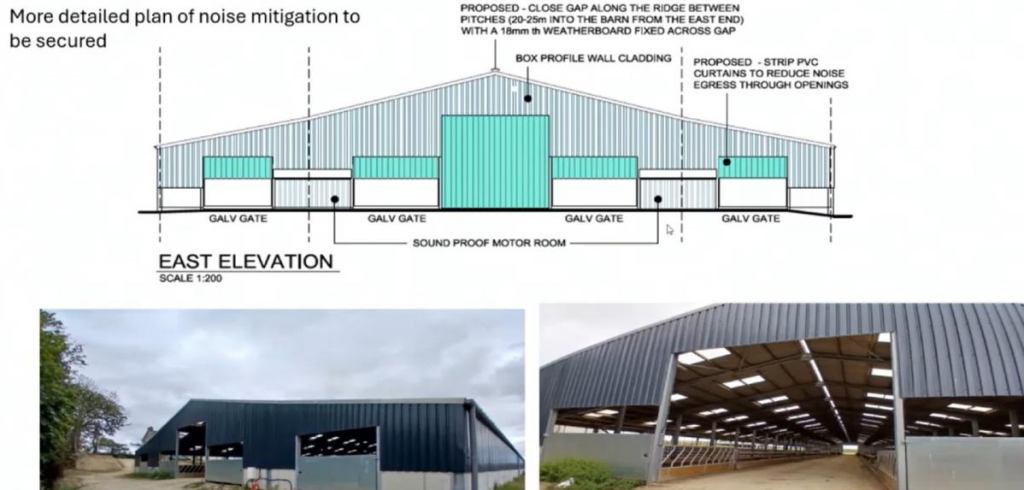
“The introduction of the slurry scraper system has resulted in a new noise source to the locality that is having a significant detrimental impact upon local amenity. The nuisance noise is directly associated with the extended hours of operation of the slurry scraper system and the noise created by the two motors powering the system including the drive mechanism that moves the scraper through the building to remove slurry produced by the housed cattle.
“To further exacerbate the situation, the building has open voids to the eastern gable end, which is within close proximity to the neighbouring property resulting in the building being acoustically weak.
“An acoustic report has been submitted with mitigation methods provided including relocating motors and associated equipment into external enclosures, reduction of noise egress through openings by installing hit-and-miss louvres and/or PVC strip curtains and consideration of blocking the gap between roof pitches along the ridge of the building.”
Three letters of concern were received from members of the public raising concerns including visual and environmental impact, noise issues and a potential for the herd size to increase.
Speaking at the meeting, neighbour Dr Andrew Williams, who stressed he was not seeking to have the shed removed, raised concerns about the noise from the ‘robot scrapers,’ exacerbated by cattle being concentrated in the immediate area from the wider farm complex.
Agent Wyn Harries addressed concerns about the retrospective nature was a result of over-enthusiasm by his client who “jumped the gun”.
He said there was now a scheme that was “fully worked through,” dealing with noise and other issues.
Members backed approval, which includes noise mitigation to address the impact of the robot scrapers; one member, Cllr Tony Wilcox, abstaining on the grounds of the retrospective native of the building “the size of a football field”.
Farming
FUW urges government action as plunging dairy prices threaten family farms
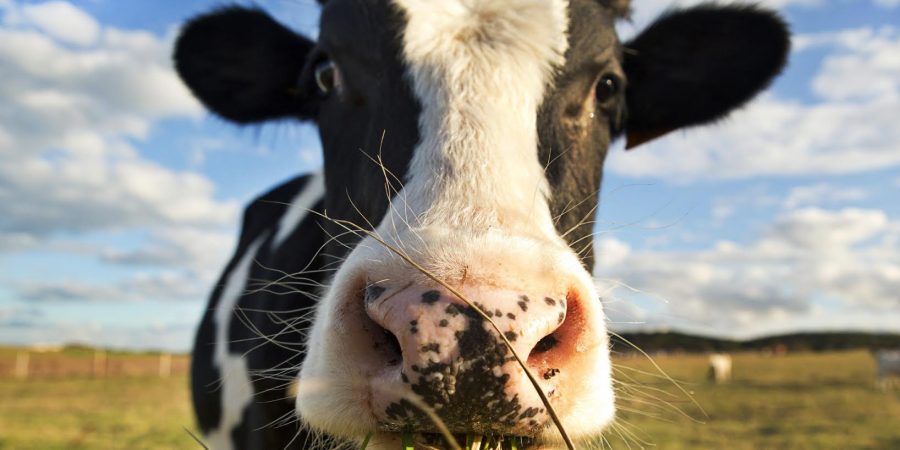
THE FARMER’s UNION OF WALES has sounded the alarm over a sharp and sustained collapse in dairy prices, warning that the situation is placing intolerable pressure on family farms already grappling with regulatory change, rising costs and wider economic uncertainty.
The Union convened an emergency meeting of its Animal Health and Dairy Committee last week to assess the scale of the crisis. Representatives from across Wales reported widespread anxiety, with many members seeing milk prices fall dramatically through the autumn. Processors are now signalling further cuts in early 2026, while commodity markets offer little sign of stability heading into spring.
Farmers, fearful of jeopardising commercial relationships, have approached the FUW confidentially to express grave concern about projected milk payments for the coming months. Many say the offers being made will fall far below the cost of production.
Average milk prices are forecast at just 30–35 pence per litre, against estimated production costs of 39–44 pence per litre (Kite Consulting). On current trajectories, the FUW warns a typical Welsh dairy farm could lose thousands of pounds per month for as long as the downturn persists.
Following its committee meeting, the Union raised the matter directly with Deputy First Minister Huw Irranca-Davies MS during talks in Cardiff on Wednesday, December 3. Officials stressed the immediate threat facing family-run dairy farms and called for urgent consideration of government support to prevent long-term damage to the sector.
Gerwyn Williams, Chair of the FUW Animal Health and Dairy Committee, said the pace of the price crash was “unprecedented”.
“Farmers are facing an impossible situation where input costs remain high while the value of their product plummets. The viability of many family farms is now at serious risk. We need immediate assurances that this crisis is being treated with the urgency it deserves.
“Some can weather a short storm, but rumours that this could continue into summer 2026 will see businesses shut. These modest family farms have already invested heavily to meet regulatory requirements. Cuts on this scale will severely impact their ability to service repayments.”
FUW Deputy President Dai Miles warned that the consequences extend far beyond farm gates.
“Dairy farming underpins thousands of jobs in Wales and is central to the economic, social and environmental fabric of rural communities. When prices fall this sharply, it isn’t just farmers who suffer — local businesses, services and entire communities feel the impact.
“We have made it clear to the Deputy First Minister that government must work with the industry to provide immediate stability and a long-term resilience plan.”
The FUW says it will continue to work with the Welsh Government, processors and supply-chain partners to seek solutions and secure fair, sustainable prices for producers.
-

 Crime5 days ago
Crime5 days agoPhillips found guilty of raping baby in “worst case” judge has ever dealt with
-

 Crime4 days ago
Crime4 days agoKilgetty scaffolder sentenced after driving with cocaine and in system
-

 Crime4 days ago
Crime4 days agoHousing site director sentenced after failing to provide breath sample following crash
-

 Crime4 days ago
Crime4 days agoMotorist banned for three years after driving with cannabis in system
-

 Education3 days ago
Education3 days agoTeaching assistant struck off after asking pupil for photos of her body
-

 News6 days ago
News6 days agoJury retires tomorrow in harrowing Baby C rape trial
-
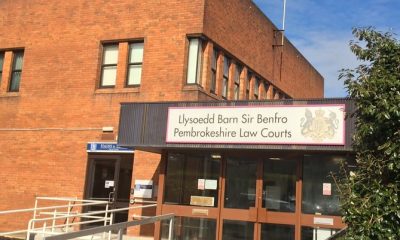
 Crime4 days ago
Crime4 days agoMilford Haven pensioner denies exposure charges
-

 Crime22 hours ago
Crime22 hours agoMan spared jail after baseball bat incident in Milford Haven

























